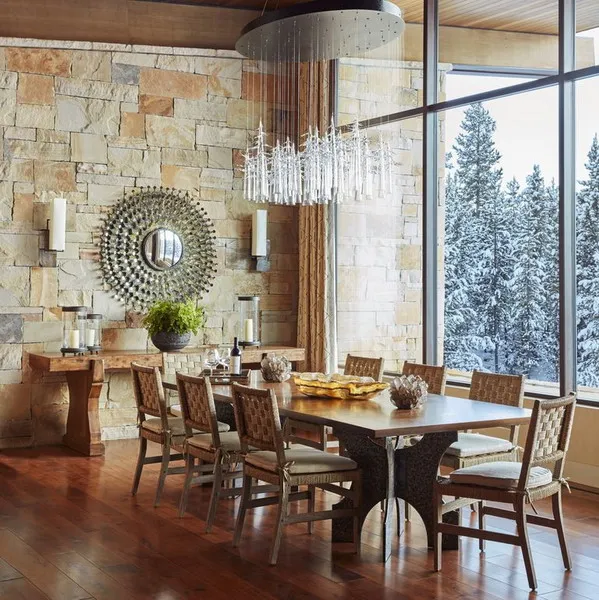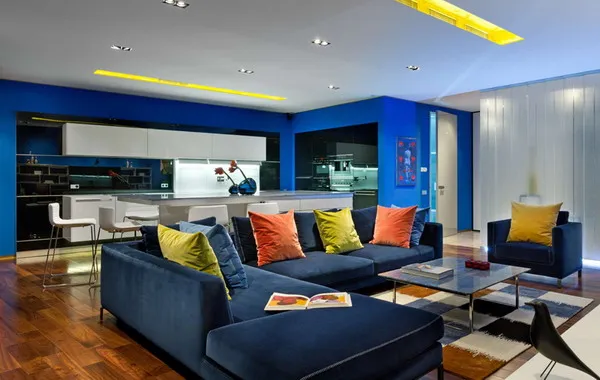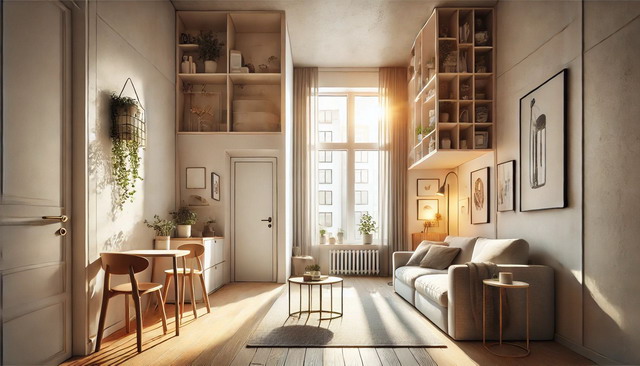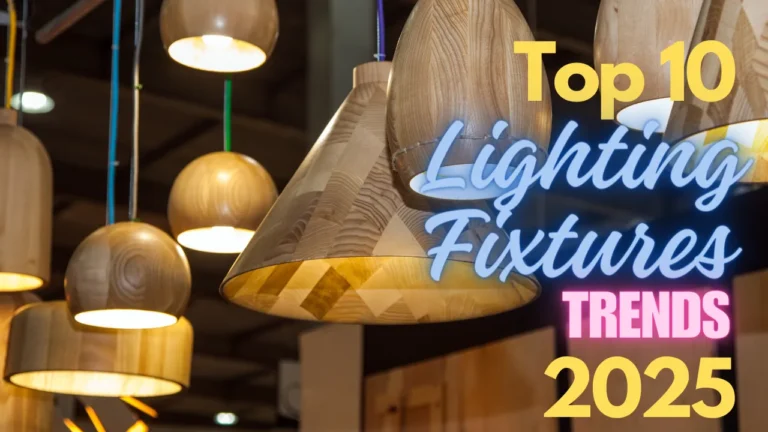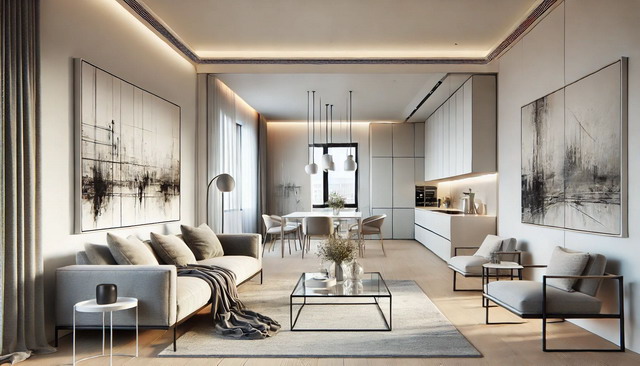Floor Trends 2025: Discover the Hottest Styles for Modern Homes
Last Updated on September 14, 2024 by Mutiara
As we approach 2025, the flooring industry is on the brink of a transformation. Driven by advancements in technology, sustainability, and design innovation, flooring trends are evolving to meet the changing needs of modern homeowners and businesses. In an era where environmental consciousness is at the forefront of consumer choices, and smart home technologies are becoming the norm, flooring is no longer just about aesthetics—it’s about creating functional, sustainable, and intelligent living spaces.
The floors of 2025 will blend form and function like never before, offering a diverse range of options that cater to various tastes, lifestyles, and priorities. From eco-friendly materials that reduce our environmental footprint to smart flooring solutions that enhance energy efficiency and safety, the choices are vast and exciting. Whether you’re looking for minimalist elegance, bold patterns, or durable, waterproof solutions for high-traffic areas, this year’s flooring trends have something to offer everyone.
This article will explore the cutting-edge floor trends set to dominate 2025. From sustainable materials like bamboo and reclaimed wood to smart flooring technology that integrates seamlessly into the modern home, we’ll cover everything you need to know to stay ahead of the curve. Get ready to discover how flooring is evolving to meet the needs of the future.
Sustainable Flooring Materials in 2025: The Rise of Eco-Friendly Solutions
As we head toward 2025, sustainability is no longer just a buzzword—it’s a defining trend across industries, and flooring is no exception. The demand for eco-friendly materials is at an all-time high, fueled by consumers’ desire to make more responsible choices for their homes and the environment. This shift has led to the rise of sustainable flooring materials, many of which have evolved significantly in both design and functionality. In this section, we’ll explore the eco-friendly flooring trends that are set to dominate 2025, from innovative materials to sustainable manufacturing processes.
The Increasing Demand for Eco-Friendly Flooring
The urgency of climate change and environmental degradation has spurred many industries to rethink their approaches to manufacturing and materials. Flooring companies, in particular, are adopting eco-friendly practices as consumers become more conscious of the environmental impact of their choices. A 2022 report by the World Green Building Council revealed that the construction industry contributes nearly 40% of global carbon emissions, and flooring materials are a substantial part of that equation.
In response, manufacturers are focusing on reducing their carbon footprint by using sustainable materials, incorporating recycled content, and minimizing waste in production. The flooring options of 2025 reflect this growing emphasis on green living, with several innovative and environmentally conscious materials leading the charge.
Bamboo and Cork: Renewable Favorites
When discussing sustainable flooring, bamboo and cork are often at the forefront. Both are renewable resources with relatively low environmental impact, making them popular choices among eco-conscious consumers.
Bamboo flooring, for instance, has gained widespread popularity due to its rapid growth cycle. Unlike traditional hardwood, which can take decades to mature, bamboo reaches full maturity in just five to seven years. This makes it a highly renewable resource that can be harvested without causing deforestation. Bamboo also boasts durability and a stylish, natural appearance, making it a perfect fit for modern homes in 2025.
Similarly, cork flooring is another sustainable option that continues to evolve. Cork is harvested from the bark of cork oak trees, which regenerates over time, allowing the trees to remain intact. Its natural resilience and anti-microbial properties make cork an excellent choice for areas like kitchens and bathrooms. Furthermore, cork’s insulating qualities help with energy efficiency by reducing heat loss during the colder months, aligning with the broader trend of eco-conscious, energy-saving homes.
Reclaimed Wood: Giving New Life to Old Materials
Another trend we’re seeing in sustainable flooring is the increased use of reclaimed wood. This material has become a favorite for homeowners looking to add rustic charm while minimizing their environmental impact. By repurposing wood from old barns, factories, and even demolished buildings, manufacturers are giving new life to materials that would otherwise go to waste.
Reclaimed wood offers the aesthetic appeal of vintage timber but with the added benefit of sustainability. It eliminates the need for new trees to be cut down, reduces the demand for freshly harvested hardwood, and offers a unique look that can’t be replicated with new materials. In 2025, expect reclaimed wood to continue making a bold statement, especially in homes designed to balance modern style with historical character.
Recycled and Synthetic Materials: Innovations in Sustainability
The innovation doesn’t stop with natural materials. Flooring manufacturers are increasingly turning to recycled materials to create products that are both stylish and sustainable. Recycled rubber, for example, has long been used in commercial spaces for its durability and resilience, but it’s now making its way into residential designs as well. Rubber flooring made from old tires not only prevents waste from ending up in landfills but also provides a slip-resistant, durable, and low-maintenance surface, ideal for high-traffic areas like entryways and gyms.
Similarly, synthetic materials, like luxury vinyl tile (LVT), are being reimagined with sustainability in mind. Some LVT manufacturers are incorporating recycled content into their products and using less water and energy during production. The result is a product that retains its trademark durability, ease of maintenance, and aesthetic versatility, while also being more environmentally responsible.
Smart Flooring Technology: The Future of Intelligent Homes
While eco-friendly materials are shaping one part of the flooring industry in 2025, technology is revolutionizing the other. The concept of a “smart home” has evolved far beyond voice-activated lighting and thermostat controls—now, even flooring is getting an upgrade. Smart flooring technology is rapidly becoming a key trend, offering both practical and innovative solutions for homeowners looking to incorporate intelligence into every corner of their living spaces.
What is Smart Flooring?
Smart flooring refers to flooring systems embedded with sensors and technology designed to interact with homeowners and their surroundings. These floors can detect various stimuli, such as pressure, temperature, and movement, and respond accordingly. For instance, sensors in smart floors can monitor foot traffic patterns, adjust heating levels, or even send alerts in case of an emergency, such as a fall.
In 2025, smart flooring is set to move from novelty to mainstream as more consumers recognize its potential benefits for both convenience and safety. Homes equipped with smart floors are not only more functional but also more energy-efficient, a crucial aspect in today’s environmentally conscious world.
Energy Efficiency Through Smart Floors
One of the most significant advantages of smart flooring is its potential for improving energy efficiency. By integrating sensors that detect room temperature and foot traffic, smart floors can help optimize heating and cooling systems. For example, if a smart floor senses that a room is unoccupied, it can signal the thermostat to lower the temperature, reducing energy consumption. Conversely, in areas of high traffic, smart floors can direct heat to ensure a comfortable environment for residents.
This technology aligns with broader trends in energy-efficient home design, which focuses on reducing waste and minimizing a home’s carbon footprint. As we move toward 2025, smart floors are expected to play a crucial role in helping homeowners achieve sustainability goals while maintaining a comfortable and technologically advanced living space.
Enhancing Safety with Smart Flooring
Beyond energy efficiency, smart flooring can also enhance safety, particularly for elderly or disabled individuals. Floors equipped with pressure sensors can detect if someone has fallen and send an alert to emergency contacts or caregivers. This feature can be life-saving in homes where residents may not have the ability to call for help themselves. Additionally, smart flooring can provide real-time data on how often a person is moving throughout their home, offering valuable insights for caregivers monitoring the well-being of loved ones.
In 2025, flooring isn’t just about looks; it’s about sustainability, technology, and functionality. The rise of eco-friendly materials like bamboo, cork, and reclaimed wood reflects our growing responsibility toward the planet, while innovations in smart flooring technology push the boundaries of what our homes can do for us. Whether it’s reducing energy consumption, enhancing safety, or contributing to a greener environment, the floors of 2025 are set to redefine how we live in our spaces.
Waterproof and Durable Flooring Options: Built to Last
As we look toward 2025, durability and resilience are becoming key factors for homeowners and businesses choosing flooring options. In busy households and high-traffic commercial spaces, flooring must withstand wear and tear while maintaining its aesthetic appeal. This growing demand has given rise to a range of waterproof and durable flooring options designed to meet the challenges of modern living without sacrificing style.
The Evolution of Waterproof Flooring
Waterproof flooring is no longer confined to the realm of bathrooms and kitchens—it’s evolving into a versatile option suitable for almost any room in the house. In 2025, we’re seeing significant innovations in waterproof flooring materials that offer more than just protection against moisture. Flooring companies are now producing waterproof options that are not only functional but also stylish and easy to maintain.
One of the standout materials in this category is luxury vinyl tile (LVT). LVT has been a favorite for several years due to its durability and waterproof nature, and in 2025, it’s continuing to dominate. Homeowners love LVT because it mimics the look of natural wood, stone, or tile, but with a water-resistant core that protects against spills, pet accidents, and moisture buildup.
Another popular choice is waterproof laminate flooring. While traditional laminate had a reputation for being vulnerable to water damage, advancements in technology have made modern laminate much more resistant to moisture. New waterproof laminate products are perfect for areas prone to spills or humidity, like kitchens, basements, and laundry rooms. They offer the same ease of installation and maintenance as standard laminate but with enhanced protection against moisture.
Durable Flooring for High-Traffic Areas
Durability is a critical consideration for any homeowner or business owner looking to invest in new flooring. In 2025, we see a continued emphasis on materials designed to handle heavy use, whether in bustling homes with kids and pets or in commercial environments with constant foot traffic.
Luxury vinyl plank (LVP) and LVT remain top choices in this category. These materials are highly durable, able to withstand scratches, dents, and general wear and tear, making them perfect for high-traffic areas like hallways, living rooms, and entryways. They also require minimal maintenance, which is an attractive feature for busy households and businesses that don’t have time for frequent repairs or refinishing.
Concrete flooring is another rising star in durability. Once thought of as cold and industrial, concrete has undergone a makeover in recent years. Polished concrete floors, for instance, are gaining popularity for their sleek, modern appearance and unrivaled toughness. These floors are nearly indestructible, making them ideal for commercial spaces or industrial-style homes. Concrete’s ability to withstand heavy traffic, impact, and moisture means it’s likely to remain a go-to option for those prioritizing longevity in 2025.
Hybrid Flooring: The Best of Both Worlds
A notable trend in 2025 is the growing popularity of hybrid flooring. This flooring type combines the durability of laminate or vinyl with the aesthetic appeal of natural wood. Hybrid floors are designed to be waterproof, scratch-resistant, and easy to maintain, offering an all-in-one solution for those seeking beauty and functionality. Hybrid flooring is particularly well-suited for homes with kids, pets, or heavy foot traffic, as it blends the best features of multiple flooring types into one versatile product.
Minimalist and Neutral Design Trends: Calm and Sophisticated Interiors
In 2025, interior design continues to shift toward minimalism and the use of neutral color palettes. Flooring plays a pivotal role in this trend, as homeowners seek flooring options that create a clean, serene backdrop for their living spaces. Neutral-colored floors are no longer seen as bland or uninspired; instead, they are being celebrated for their versatility and timeless appeal.
The Power of Neutral Tones
Neutral flooring colors like soft grays, warm beiges, and creamy whites are dominating design choices in 2025. These tones provide a flexible foundation for any room, allowing homeowners to experiment with bolder colors in furniture and décor while maintaining a calming and cohesive atmosphere. The subtlety of neutral floors also makes them an excellent choice for open-concept homes, where the flooring needs to flow seamlessly from room to room.
Many homeowners are choosing light wood or wood-look floors in neutral shades, such as pale oak or bleached maple, to create a sense of spaciousness and airiness. These colors reflect natural light, making rooms feel larger and more inviting. Light wood floors are especially popular in minimalist and Scandinavian-style interiors, where simplicity and function take center stage.
Best Flooring for Minimalist Interiors
When it comes to minimalist interiors, less is always more. The flooring needs to be understated yet elegant, complementing the overall simplicity of the space. Polished concrete, light-colored hardwood, and large-format tiles in neutral shades are all excellent choices for achieving a minimalist look in 2025.
Polished concrete floors, in particular, are becoming a hallmark of minimalist design due to their sleek appearance and low-maintenance qualities. Their smooth, reflective surface enhances the clean lines and open spaces characteristic of minimalism, making them a perfect match for homes with minimalist design elements.
Large-format tiles in shades of beige, gray, or cream are also popular for minimalist interiors. These tiles create a seamless, uniform look that enhances the simplicity of a space while providing durability and ease of cleaning.
Bold Patterns and Textures: Adding Personality and Depth
While minimalism and neutral tones dominate one end of the design spectrum, bold patterns and textures are emerging as a countertrend in 2025. Homeowners who want to add a touch of personality and creativity to their floors are increasingly opting for bold, statement-making designs that serve as the focal point of a room.
The Resurgence of Bold Patterns
Geometric and patterned tiles are making a strong comeback in 2025, offering a way to infuse floors with personality. Whether in kitchens, bathrooms, or entryways, homeowners are choosing bold patterns like hexagons, herringbone, and chevron to create eye-catching designs that reflect their personal style. These patterns can make even the most functional spaces feel artistic and dynamic.
Patterned wood flooring is another trend gaining traction. From chevron and herringbone layouts to intricate parquet designs, patterned wood floors add texture and depth to a room, giving it a unique character that stands out from traditional hardwood installations.
Textured Flooring for a Natural Feel
Another exciting trend for 2025 is the increased popularity of textured flooring. While smooth floors remain a classic choice, homeowners are gravitating toward textures that mimic natural materials, such as hand-scraped wood, wire-brushed finishes, and stone-look tiles. These textures add a tactile dimension to floors, making them feel more organic and inviting.
Hand-scraped hardwood floors, for example, offer a rustic, lived-in feel that adds warmth and character to a home. Meanwhile, stone-look tiles provide a similar natural aesthetic with the added benefit of durability and moisture resistance. Textured floors are perfect for those looking to create a cozy, natural ambiance in their homes without compromising on style or practicality.
As we move into 2025, flooring trends reflect a dynamic balance between functionality, sustainability, and design. From the durability of waterproof and hybrid flooring to the minimalist elegance of neutral tones and the bold expression of patterned and textured options, homeowners have more choices than ever to suit their unique tastes and needs.
Luxury Vinyl and Laminate Trends: Affordable Yet Stylish Solutions
Luxury vinyl and laminate flooring have come a long way in the past decade, and by 2025, they are expected to dominate the market even more. These materials are no longer viewed as budget alternatives but rather as stylish, durable, and versatile solutions that offer the look of high-end flooring at a fraction of the cost. Advances in technology have made luxury vinyl plank (LVP) and laminate flooring not only more aesthetically pleasing but also more durable and environmentally friendly, making them go-to choices for homeowners and designers alike.
Luxury Vinyl Plank (LVP) Trends for 2025
Luxury vinyl plank (LVP) has become increasingly popular for its ability to mimic the look of natural materials such as hardwood, stone, and tile. In 2025, we’ll see LVP pushing the boundaries of realism, with manufacturers producing designs that are nearly indistinguishable from authentic wood or stone. Thanks to advancements in printing technology and texturing techniques, LVP now offers deeper grain patterns, realistic color variations, and even hand-scraped finishes, giving floors a more natural and luxurious appearance.
The beauty of LVP isn’t just in its appearance—its durability and water-resistant properties make it an excellent choice for high-traffic areas like kitchens, bathrooms, and entryways. Homeowners are drawn to LVP for its ability to withstand moisture, scratches, and wear, making it one of the most resilient flooring options available. Additionally, LVP is easy to install, with many products offering click-and-lock systems that allow for seamless, DIY installation. This makes it a practical and affordable choice for homeowners looking to refresh their space without breaking the bank.
In terms of design trends, wide planks and light wood tones will dominate the LVP market in 2025. Wide planks create a more spacious, open feel in a room, while light-colored LVP, such as bleached oak or whitewashed pine, aligns with the minimalist and Scandinavian design trends that are continuing to gain traction. Additionally, textured finishes such as embossed-in-register (EIR) will become more common, providing a realistic feel that mirrors the texture of real wood.
Laminate Flooring Styles for 2025
Laminate flooring, once considered a cheap alternative to hardwood, has undergone a major transformation in recent years. The laminate of 2025 is sophisticated, durable, and incredibly realistic. Thanks to improvements in imaging and surface technology, laminate floors now offer high-definition woodgrain patterns and textured surfaces that rival the look and feel of real wood.
One of the biggest trends in laminate flooring for 2025 is waterproof laminate. Traditionally, laminate flooring was known to be susceptible to water damage, but new innovations have made it highly resistant to moisture. This makes it an ideal choice for areas where homeowners want the look of hardwood without worrying about spills, such as kitchens, bathrooms, and basements.
In terms of design, laminate flooring will continue to embrace natural wood looks, with herringbone patterns and chevron layouts becoming increasingly popular. These designs add a touch of elegance and sophistication to any space, elevating laminate flooring from a practical choice to a stylish statement. Darker wood tones, such as walnut and mahogany, will also be in demand, offering a rich and luxurious aesthetic that contrasts beautifully with light, neutral-colored walls.
Flooring Trends by Room: Tailoring Flooring to Specific Spaces
As flooring trends evolve, so does the desire to tailor flooring choices to specific rooms within the home. In 2025, choosing the right flooring for each room is no longer just about aesthetics—it’s about functionality, durability, and the unique needs of the space. From open-concept living areas to moisture-prone kitchens and bathrooms, here’s a breakdown of the best flooring options for different areas of the home.
Best Flooring for Open-Concept Living Spaces
Open-concept living spaces are a hallmark of modern home design, and choosing the right flooring for these areas is crucial for maintaining a cohesive and flowing look. In 2025, homeowners will increasingly opt for wide-plank hardwood or luxury vinyl plank (LVP) to create a seamless transition between different zones, such as the living room, dining area, and kitchen.
Wide-plank flooring adds a sense of openness and grandeur, while LVP offers the added benefit of being water-resistant and highly durable—important factors for areas that see a lot of foot traffic. Neutral tones like light oak, beige, and soft gray will continue to be popular choices, as they create a calm and inviting atmosphere while allowing for flexibility in furniture and décor.
For homeowners seeking a more uniform look, polished concrete flooring is also an excellent option for open-concept spaces. Concrete’s sleek and minimalist appearance aligns with contemporary design trends, and its durability and low-maintenance qualities make it ideal for large, open areas.
Best Flooring for Kitchens and Bathrooms
When it comes to kitchens and bathrooms, moisture resistance is the top priority. In 2025, waterproof materials like luxury vinyl tile (LVT), waterproof laminate, and ceramic or porcelain tile will remain the go-to options for these spaces.
LVT and waterproof laminate offer the look of natural materials like wood or stone while providing superior water resistance, making them perfect for kitchens and bathrooms where spills, humidity, and moisture are common. These materials are also easy to clean and maintain, making them a practical choice for busy households.
For those looking to make a design statement, patterned tiles in bold geometric designs will be increasingly popular in 2025. These tiles can add a touch of personality to kitchens and bathrooms, creating a focal point that enhances the overall design of the space. Meanwhile, large-format tiles in neutral tones will continue to be a favorite for homeowners seeking a sleek, modern look with fewer grout lines and easier maintenance.
Conclusion: Floor Trends in 2025—A New Era of Innovation
The flooring trends of 2025 are all about finding the perfect balance between style, durability, sustainability, and technology. From eco-friendly materials like bamboo and reclaimed wood to the rise of smart flooring systems that enhance energy efficiency and safety, the floors of the future are designed to cater to the demands of modern living.
Waterproof and durable flooring options, such as luxury vinyl plank and concrete, are set to dominate, while minimalist and neutral tones will continue to influence design choices across the board. Bold patterns and textures offer an exciting counterpoint to these subtler trends, allowing homeowners to express their creativity through their flooring choices.
In addition, the rise of luxury vinyl and laminate flooring has made high-end looks more accessible than ever, offering affordable solutions without compromising on style or performance. As homeowners become more conscious of the specific needs of different rooms, flooring choices will increasingly reflect the functionality and character of each space.
As we move into 2025, the future of flooring is bright, innovative, and tailored to the diverse lifestyles and preferences of modern homeowners. Whether you’re drawn to the eco-friendly innovations, the tech-savvy advancements, or the aesthetic evolution of flooring, there’s something for everyone in the exciting world of floor trends for 2025.
